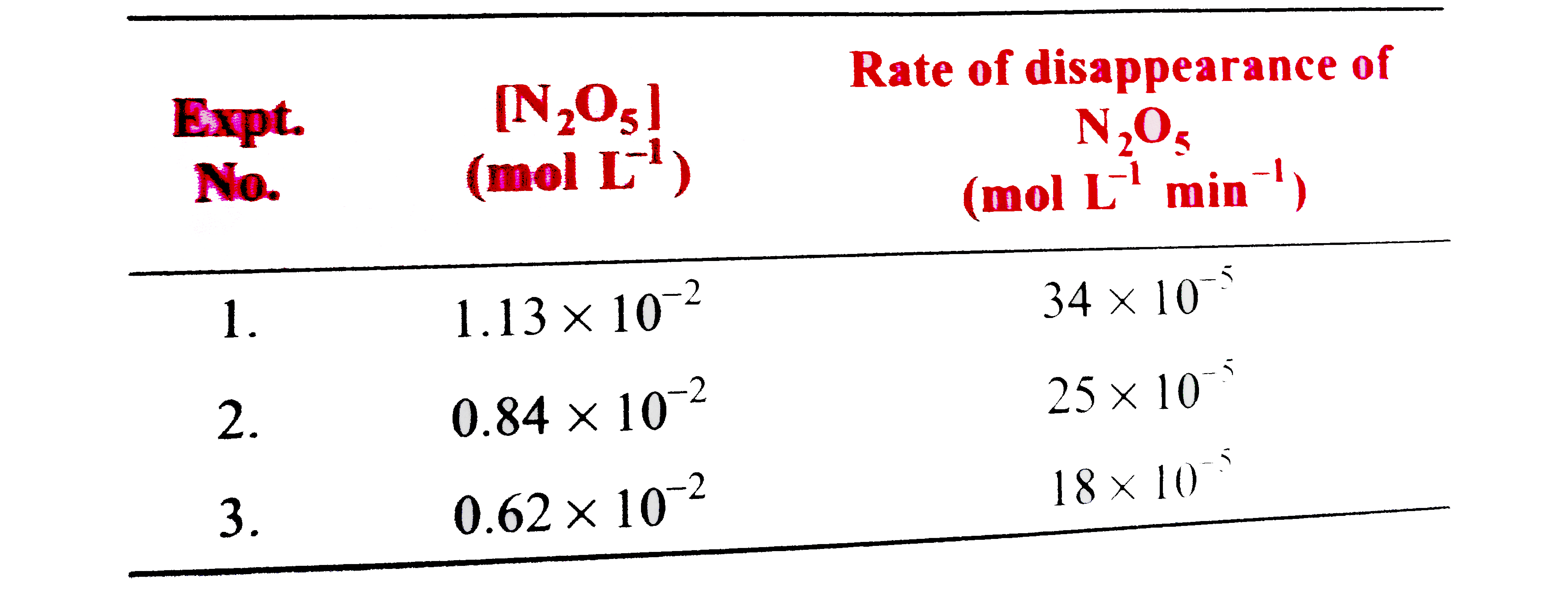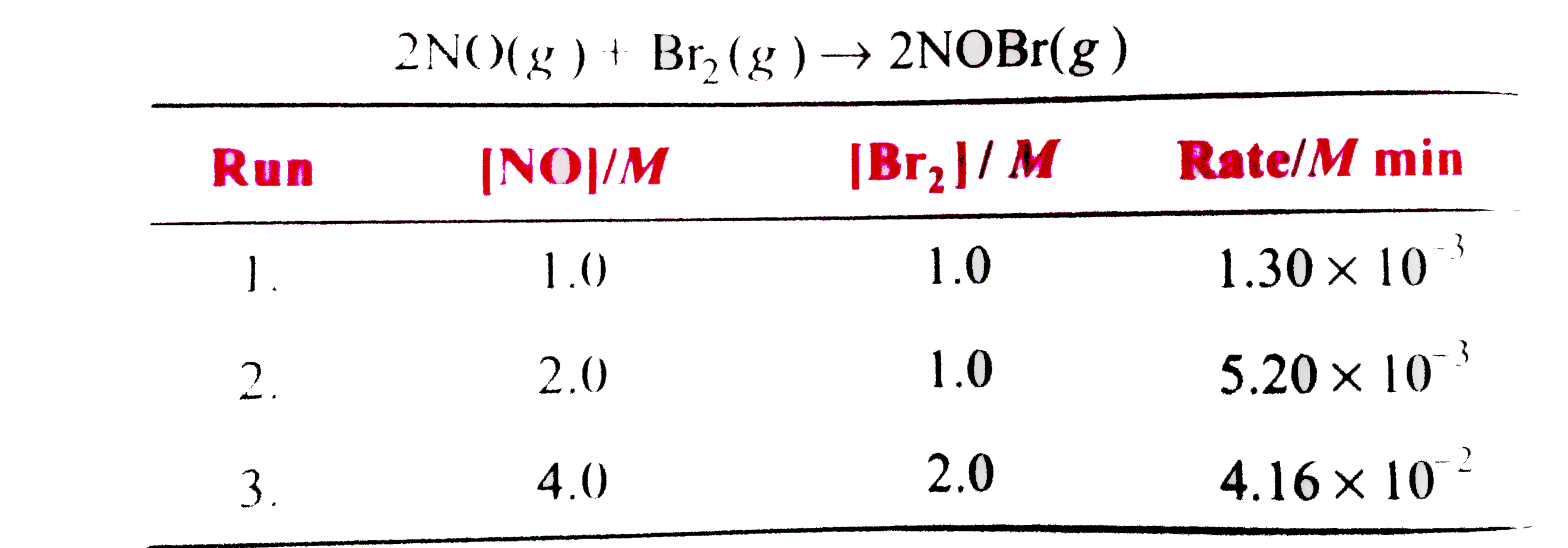For the reaction
the following data were collected. All the measurnments were taken at 263 K.

a) Write the expression for rate law,
b) Calculate the value of rate constant and specify its untis.
c) What is the initial rate of disappearance of in exp. 4?
The rate law equation may be expressed as:
Rate=
Comparing experiments 1 and 2
Dividing eq. (ii) by eq. (i),
or q=1
Comparing experiments 1 and 3
Dividing eq. (iii) by eq (i)
a) Expression for rate law, Rate =
b) Rate constant (k) for the reaction may be calculated as:
since, the reaction is of third order : units of rate constant k =
c) Initial rate of disappearancing of chlorine in experiment-4
Rate
Topper's Solved these Questions
- BOOK - DINESH PUBLICATIONCHAPTER - CHEMICAL KINETICSEXERCISE - NCERT Exercise1videos
CHEMICAL KINETICS
- BOOK - DINESH PUBLICATIONCHAPTER - CHEMICAL KINETICSEXERCISE - NCERT in text questions38videos
CHEMICAL KINETICS
- BOOK - DINESH PUBLICATIONCHAPTER - CHEMICAL BONDING AND MOLECULAR STRUCTUREEXERCISE - Unit Test - 120videos
CHEMICAL BONDING AND MOLECULAR STRUCTURE
- BOOK - DINESH PUBLICATIONCHAPTER - CHEMICAL THERMODYNAMICS AND CHEMICAL ENERGETICS EXERCISE - Exercise507videos
CHEMICAL THERMODYNAMICS AND CHEMICAL ENERGETICS
Similar Questions
For the reaction 2NO(g)+Cl2(g)→2NOCl(g) the following data were collected.
All the measurements were taken at 263K :

(a) Write the expression for rate law.
(b) Calculate the value of rate constant and specify its units.
(c) What is the intitial rate of disappearance of Cl2 in exp. 4 ?View SolutionFor the reaction 2NO(g)+Cl2(g)→2NOCl(g) the following data were collected.
All the measurements were taken at 263K :

Write the expression for rate law.View Solution
Knowledge Check
- Question 1 - Select One
The rate of the reaction
2NO+Cl2→2NOCl
is given by the rate equation
Rate=k[NO]2[Cl2]
The value of the rate constant can be increased byAIncreasing the temperatureBIncreasing the concentration of NOCIncreasing the concentration of the Cl2DDoing all of these - Question 2 - Select One
For the equilibrium
2NO(g)+Cl2(g)⇔2NOCl(g)
Kp is related to Kc by the reactionAKp=Kc(RT)BKp=Kc(RT)2CKp=Kc/RTDKp=Kc/(RT)2 - Question 3 - Select One
For the equilibrium
2NO(g)+Cl2(g)↔2NOCl(g)
Kp is related to Kc by the reaction:AKp=Kc(RT)BKp=Kc(RT)2CKp=KcRTDKp=Kc(RT)2
The reaction : 2N2O5(g)→2NO2(g)+(O2)g
was studied and the following data were collected.

Determine: (i) the order, (ii) the rate law and (iii) rate constant for the reaction.View SolutionThe reaction ,
2N2O5→4NO2+O2
was studdied and the following data were collected :

Determine (i) order the reaction (ii) the rate law and (iii) rate constant for the reactionView SolutionThe following initial rate data were obtianed for the reaction
2NOg+Br(g)→2NOBr(g)

Determine the reaction rat law and the value of te rate constant.View SolutionFor the reaction Cl2(g)+2NO(g)→2NOCl(g), the rate law is expressed as : rate =k[Cl2][NO]2. What is the overall order of this reaction?
View SolutionFor a reaction 2NO(g)+Cl2(g)→2NOCl(g), when concentration of Cl2 is doubled, the rate becomes four times. What is the order of reaction with respect to Cl2 ?
View Solution
